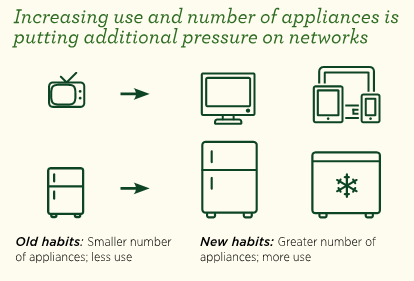Have you ever looked at your power bill and wondered why it’s different this time? You’re not imagining things—electricity prices change, sometimes more than we’d like.
Weather, supply, and demand all play a part, and when things like heatwaves or power plant breakdowns happen, prices can jump. It’s frustrating, especially when trying to keep the lights on and the house comfortable.
The good news? A little know-how can go a long way in helping you understand what’s happening and what you can do about it.
Here is a quick summary of What Causes Electricity Price Spikes in Australia:
— Weather Conditions: Extreme heat or cold increases electricity use (AC, heating), pushing prices higher.
— Supply Issues: Unexpected outages or maintenance at power plants reduce supply, causing price rises.
— Fuel Prices: Increases in coal or natural gas costs raise electricity prices.
— Peak Demand: When many people use electricity simultaneously, more expensive generators are used, leading to higher costs.
Let’s break it down.

What Causes Electricity Price Spikes?
Australia’s energy system is built around the National Electricity Market (NEM), which connects five states—New South Wales, Victoria, Queensland, South Australia, and Tasmania. This grid helps ensure electricity gets to where needed, keeping things running smoothly across the country.
For a long time, our electricity mainly came from coal-fired power plants. But there’s been a positive change in recent years as we shift towards cleaner, renewable sources like wind and solar. It’s all part of a bigger global effort to create a more sustainable future, and seeing these changes take shape is exciting.
However, while this shift is necessary and beneficial, it can also play a part in occasional electricity price spikes, especially during high demand. It’s a balancing act; we understand it can be frustrating when prices rise unexpectedly. But rest assured, we’re here to help you understand the reasons behind these changes and share ways to navigate them.
Several key factors contribute to fluctuations in electricity prices:
- Weather Conditions: When extreme weather hits, like during a heatwave or a cold spell, we all use more electricity—whether running the air conditioner or turning up the heat. This surge in demand can push prices higher, especially when temperatures soar and power plants can’t keep up with the need for electricity. We understand how stressful this can be when prices increase during the hottest or coldest months.
- Supply Issues: Sometimes, older power plants need surprise repairs or maintenance, which can limit how much electricity is available. When this happens, there’s less power, and prices can rise. The Australian Energy Regulator has pointed out how these unexpected outages cause strain on the system, and sometimes plants have to run longer hours to keep everything running.
- Fuel Prices: The cost of fuels like coal and natural gas is a significant factor in how much electricity is needed to make electricity. When the price of natural gas goes up, because of things like higher demand or more exports—your electricity prices often go up, too. We know it’s not ideal and frustrating when fuel costs increase, but understanding this can help you better plan your energy use.
Sumo’s Head of Commercial, Ben Hoh, explained, "The electricity market is sensitive to many moving parts. While we can’t control the weather or fuel prices, we’re committed to offering our customers competitive rates, even during market instability."
These ups and downs can be frustrating, especially when you want an affordable, reliable power supply. But understanding what’s going on can help you make better energy choices at home.
Peak Demand and Its Impact on Electricity Prices
We’ve all been there—after a long day at work, we get home, turn on the lights, start cooking, and maybe run the washing machine. In these moments, when we’re all using electricity at once, the power demand is at its peak. This surge can put a lot of pressure on the electricity grid, and, unfortunately, that means higher prices for us (DCCEEW).
Increased Demand = Higher Prices
Electricity works like any other product—when more people want it, the price increases. When the grid can’t meet the demand with its usual sources, more expensive power plants, like gas-fired generators, are brought online. These plants are pricier to operate, and those higher costs often get passed on to us, the consumers.
The Hidden Costs of Keeping the Grid Ready
The grid is designed to handle these peak demand moments, but here's the thing: it has to be ready even if those busy times are only a few times a year. Building and maintaining the infrastructure—power plants, transmission lines, and substations—comes at a hefty price. And even though much of this equipment sits idle most of the time, the costs of keeping it all in place end up being added to our bills, making electricity more expensive.

Source: DCCEEW**
** DCCEEW: Department of Climate Change, Energy, the Environment and Water
It’s a challenging situation; we know it can feel frustrating when you see your bills rise. The good news is that there are steps you can take to manage your electricity use and ease its impact on your wallet.
Worried About Rising Energy Prices? Here’s How You Can Save
While electricity prices can change, you have the power to lower your costs by making a few simple changes at home. Check out our Energy saving tips for practical ways to cut down on usage and reduce your bills.
Want to see how much you could save? Please enter your postal code below to explore our competitive energy plans for your area!

No Comments Yet